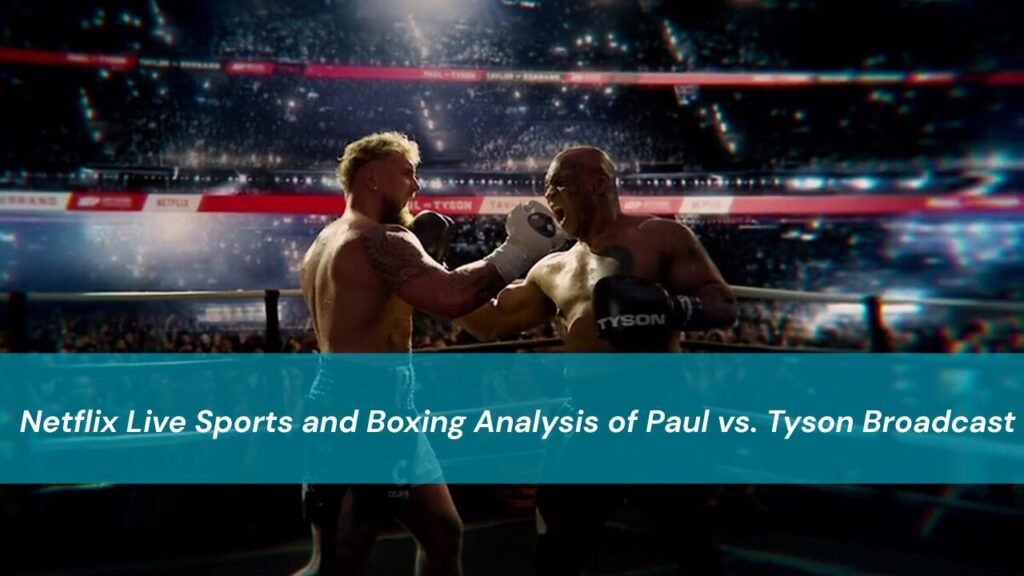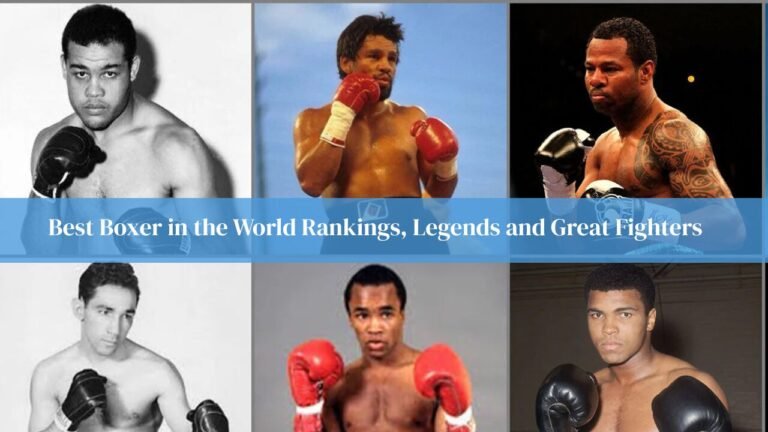Netflix has long dominated the entertainment streaming space, but its ambitious foray into live sports reached a defining moment with the July 2025 broadcast of the Jake Paul vs. Mike Tyson boxing match. With over 108 million global viewers tuning in live, according to official data from Netflix, the event marked a turning point in how audiences consume sports and how streaming platforms are redefining traditional pay-per-view models.
This high-profile bout wasn’t just about two fighters separated by generations. It was Netflix’s strategic move to plant its flag in the growing arena of live sports, which has historically been the stronghold of networks like ESPN and DAZN. With a global reach and an existing subscriber base exceeding 260 million, Netflix has the infrastructure to challenge old norms. The Paul vs. Tyson fight became a litmus test for whether audiences would accept live sporting events on a platform typically known for scripted series and films.
From a technical standpoint, the live stream was executed with precision. Viewers noted minimal buffering or latency issues, a frequent challenge in large-scale live broadcasts. Netflix partnered with multiple global CDNs (Content Delivery Networks) and tested capacity under stress conditions ahead of the event, ensuring a seamless viewing experience. The broadcast included multiple camera angles, real-time commentary, and even interactive overlays for user engagement features that mirrored the best aspects of legacy sports broadcasters while integrating new-age streaming innovation.
According to independent industry analysts cited by The Verge, Netflix invested in cutting-edge real-time encoding systems and partnered with AWS and Akamai to support the broadcast’s technical load. These industry-leading systems played a key role in delivering high-resolution content to millions simultaneously, showcasing the platform’s technical expertise in live media.
In terms of audience engagement, Netflix saw spikes in viewership not only in the U.S. and Canada but also across key international markets like the UK, Brazil, and the Philippines. The platform reported record engagement levels, with users spending an average of 73 minutes on the broadcast, an impressive figure for a single sporting event.
The fight also dominated social media trends globally, demonstrating Netflix’s ability to stir public conversation and cultural buzz on par with major sports leagues. The fighters themselves played a crucial role in building anticipation. Jake Paul, a social media-savvy personality turned boxer, has cultivated a unique fan base that thrives on controversy and spectacle. Mike Tyson, though in his late 50s, brought historical gravitas and curiosity value that transcended typical fight demographics.
Their match-up was part sport, part entertainment, and Netflix capitalized on this hybrid appeal to craft a storyline that captured mass attention well ahead of fight night.
A New Frontier for Netflix
This wasn’t Netflix’s first experiment with live events. Earlier in 2024, the platform streamed Chris Rock’s live comedy special and a golf exhibition featuring F1 drivers and PGA pros. However, the Paul vs. Tyson fight was its most ambitious production yet. Unlike its previous live events, this boxing match included international licensing agreements, real-time subtitle generation in over 20 languages, and tailored advertising for different regions, a testament to Netflix’s growing capabilities in the live broadcasting domain. Critics were initially skeptical. Would audiences raised on traditional sports networks really embrace Netflix as a viable live sports provider? The results suggest a resounding yes.
Netflix not only matched but in some ways exceeded expectations. The Independent noted how Netflix’s editorial approach to pre- and post-fight content gave it a narrative richness missing in many pay-per-view events. This approach created a more immersive experience, enticing even casual viewers to tune in.
Financially, Netflix has remained opaque about the exact costs or returns of the event, but analysts speculate that its success could lead to the platform bidding on larger sports rights packages in the near future. According to a report by Bloomberg, internal discussions are ongoing around acquiring partial rights to upcoming boxing tournaments and MMA leagues. Rumors are already circulating about potential partnerships with boxing promotions and even early talks with tennis and MMA organizers.
If Netflix manages to integrate live sports into its broader content library without adding tiered fees, it could disrupt the sports broadcasting industry in ways not seen since the advent of cable. What remains to be seen is whether this model is scalable. Not every live sports event carries the celebrity power of Jake Paul or the legacy of Mike Tyson. Replicating this level of success will require a steady stream of compelling matchups and innovative presentation. But as a proof of concept, the Paul vs. Tyson broadcast has firmly positioned Netflix as a serious player in the world of live sports.
Netflix’s ambitions may extend even further. Industry insiders suggest that Netflix is exploring technology partnerships for virtual reality (VR) and augmented reality (AR) enhancements in future sports events. This could revolutionize how fans interact with content, giving them the ability to switch camera angles, view biometric data from athletes in real-time, or even attend matches virtually in 3D environments. If implemented successfully, this could create a new gold standard for sports broadcasting in the digital age.
Financial Implications and Long-Term Vision
Furthermore, the economics of live sports streaming could significantly benefit Netflix. Traditional broadcasters rely heavily on advertising revenue and cable subscriptions, both of which are declining. Netflix, on the other hand, operates on a global subscription-based model with optional ad-supported tiers, giving it financial flexibility.
According to media economist Dr. Alicia Moreno at NYU, “Netflix’s entry into live sports leverages its existing infrastructure while tapping into new revenue channels like in-stream advertising and global sponsorships. It’s a model that could eventually make pay-per-view obsolete.” There are still hurdles to overcome. Regulatory issues, regional sports rights restrictions, and the logistical complexity of simultaneous global broadcasts present real challenges.
Yet Netflix’s track record of innovation and user-first content strategy suggests it’s well-equipped to navigate this terrain. Its use of AI for personalized recommendations could also translate into sports, where users might receive custom content feeds tailored to their favorite athletes, teams, or fight styles.
As of August 2025, the success of the Paul vs. Tyson fight has already led to further announcements. Netflix has signed preliminary agreements with Top Rank Boxing and Bellator MMA for co-produced live events starting in 2026. These partnerships will include behind-the-scenes documentaries, athlete profiles, and interactive content designed to deepen fan loyalty and extend viewer engagement beyond the main event.
From a cultural standpoint, the broadcast represents more than just a one-off media event. It reflects a broader shift in how younger audiences engage with sports and entertainment. Rather than choosing between Netflix or ESPN, viewers now expect hybrid platforms that merge storytelling, interactivity, and accessibility across devices. The future of sports broadcasting lies not just in who owns the rights, but in who can deliver the most immersive and frictionless experience.
FAQs
What was the official result of Jake Paul vs. Mike Tyson?
Jake Paul won by unanimous decision after 8 competitive rounds.
Was the fight sanctioned as professional or exhibition?
It was sanctioned as a professional fight with official judges and scoring.
How much were the fighters paid?
Jake Paul: Estimated $20 million including PPV share
Mike Tyson: Estimated $15 million
Note: These figures are based on industry estimates and not officially disclosed. Forbes previously reported similar figures for Paul’s fight purses.
How did fans react to the outcome?
While many praised Paul’s strategy and cardio, others felt Tyson deserved more credit. Social media reactions were divided, reflecting the novelty of the matchup.
Will Jake Paul fight again soon?
Most likely. Rumors suggest potential bouts with Tommy Fury (rematch), Nate Diaz, or even a crossover MMA fight with a PFL fighter.




